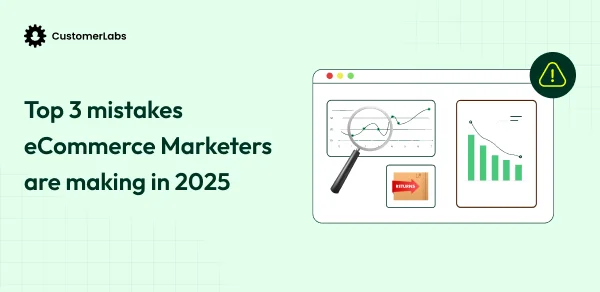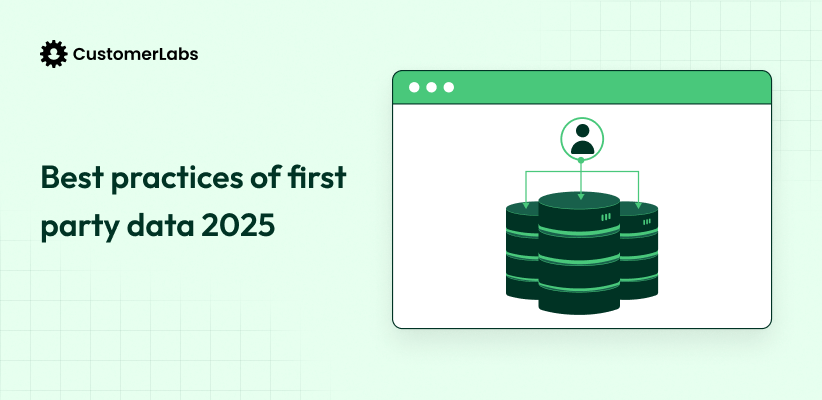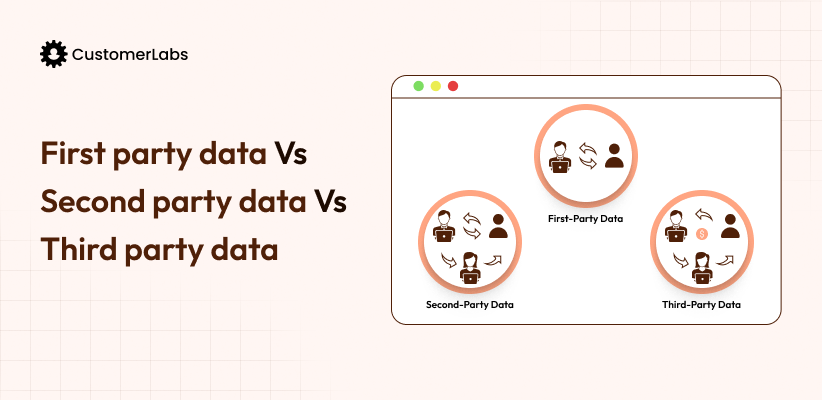No one would want their hard-invested stocks to rot inside the warehouse. Especially, not the brand owners. Clearance sales are crucial for e-commerce businesses. They not only help in offloading unsold stock but also attract price-sensitive customers who wait for end-of-season discounts.
However, achieving success with a clearance sale ads strategy requires more than just slashing prices—it demands a strategic approach to marketing and customer engagement. Running compelling ads to drive valuable customers is what usually marketers do. But it has become so common that every brand out there keeps declaring sales and offers out of nowhere.
With heavy competition in the market, how can your ads win the attention of the right users and hook them towards making the purchase? The actual hook is “Your Data.”
Hook: Your Data
Yes, you heard me right. Training the ad algorithm with nourished first-party data is how you can make your clearance sale a complete win. Unlike third-party data, which has become less reliable due to privacy restrictions and tracking limitations, 1PD (first-party data) provides direct insights into customer preferences, purchase behavior, and engagement patterns. By leveraging 1PD effectively, performance marketers can optimize ad campaigns, personalize offers, and maximize sales during clearance sales.
Let’s understand some common challenges faced by marketers during a clearance sale.
Key Pain Points for Performance Marketers
Performance marketers often face significant challenges when running ads for clearance sale, including:
- Low return on ad spend (ROAS): Generic clearance sale ads often fail to convert efficiently.
- Inventory mismanagement: Selling slow-moving stock without targeting the right audience leads to unsold items.
- Ineffective retargeting: Not leveraging customer purchase history results in poor ad performance.
- Increased competition: Many brands run clearance sales simultaneously, making it harder to capture attention.
Now that you know the challenges, let’s look into some first-party data strategies to hook the right audience with the clearance sales campaign.
Clearance Sale Ads Strategy with 1PD for Performance Marketers
Audience Segmentation
Instead of just targeting users broadly, narrow it down for precise targeting by strategically segmenting the audience for the clearance sales.
How to Segment Your Audience for a Clearance Sale?
In order to win the competition and make your clearance sale a hit, you need to systematically and strategically segment the target audience. To make it easy for you, have a goal and segment the users to push them towards it. Few segments are as follows:
Purchase History-Based Segmentation:
You need to identify customers who have previously bought similar products to those on clearance. You can create exclusive offers or early-bird access for these loyal buyers.
Engagement-Based Segmentation:
Segment the users who have recently interacted with your website, email campaigns, or social media ads in regards to the clearance sale. You can segment it like users who viewed the clearance sale products or the page, users who added products to their cart mentioned in the clearance but did not purchase. You can target these users with a retargeting campaign with a time-sensitive discount that can push them towards conversion.
Price-Sensitive Audience Segmentation:
In this segment, you will have to focus on the users who take actions when there is a price drop. Keeping that in mind, you can segment the past customers who have engaged or showed interest in your brand when there is a discount or a sale. You can create ad creatives and email campaigns specifically for deal-hunters, emphasizing limited-time offers and flash sales.
The next clearance sale ads strategy is
Using Segments as a Seed Audience for Ad Platforms
Once you are done segmenting your audience, the next step is optimizing your ads by sending this segmented audience to ad platforms like Meta and Google as a seed audience.
A seed audience refers to a group of users with shared behaviors and attributes, making them ideal for targeting. By using the seed audience ad platforms, analyze and understand the characteristics, preferences, and demographics for targeting. By defining a strong seed audience, you can scale campaigns while maintaining relevancy.
You can import these segmented (purchase, engagement or price-based) users into ad platforms as higher-intent users. By setting these segments as seed data, the ad platform’s AI and machine learning algorithms use the seed audience to optimize who sees your ads, ensuring the ads reach users who are more likely to engage, click, or convert. This will improve bidding strategies, enhance the ad delivery, increase personalization, and expand your campaign’s reach.
Retargeting Ads for Segmented Audience
Another cost-effective strategy that you can build around your segmented audiences is setting up retargeting campaigns. With retargeting ads, you can re-engage potential buyers who are already familiar with your brand and remind them about your clearance sale.
Clearance sale ads strategy: Retargeting tactics using 1PD
Dynamic Retargeting Ads for Engagement-Based Segmentation
Now that you know the exact product or the product category the users have interacted with in the clearance, you can run ads showcasing the exact products. Use personalized messaging featuring the clearance sale and the discounts, which will hook the users and make them purchase.
You can try sending in urgency messaging, like “adding a countdown” or “2 days to go,” for users to immediately make the purchase before the sale ends.
Retargeting Purchase History-Based Users
With the first-party data, identify users who have bought products in the clearance or a complementary product. You can retarget these users with the relevant product in the clearance that you would match their previous purchases. This way you can meet the demand or instigate their emotions to make the purchase.
Retargeting Price-Sensitive Audience
For the price-sensitive segment, you need to strategically dissect the product based on their price. Since these audience purchases during the offers, they might either make a purchase when the price is low or while on an offer.
You can run retargeting ads showcasing low-end products in your clearance for these audiences; this way there is a higher probability of conversion taking place. You can add personalized messaging with discounts or offers as well.
Read on: Meta Retargeting Ads strategy for Shopify in 2025
Creating Lookalike Audience
Bringing back the concept of seed audience, the next step is to scale your campaign using lookalike audiences. To target more users like these, ad platforms find users who possess similar behavior to that of the seed audience (who you used for targeted campaigns).
You can upload these segments and use a 1% lookalike audience to find people closely resembling your best customers and slowly expand it between 3 and 5% to have greater reach without compromising on the quality of the users.
Creating a lookalike audience based on a seed audience helps reach fresh, high-intent users and increase conversions at a low ad waste.
So far, we concentrated on segmenting and targeting the audience effectively. Next strategy is based on events (the actions that the users take).
Custom Conversion Event Optimization
For the ad campaigns to be successful, the events you send along with the audience are more important.
Instead of optimizing the ad campaigns for a generic conversion event, you can set conversions goals that align with your business goals. For instance, let’s assume that your business objectiveis to increase the high AOV purchases or a specific category to be sold out in the clearance sale.
Now your campaign objective will also be to increase high AOV purchases or increase sales for that specific category. So when you send in events, you should send only high AOV purchase events or a specific purchase event to the ad platforms.
By custom conversion event optimization, the ad campaigns will target the right audience while providing conversions and simultaneously fulfilling your business goals for the clearance sale.
These are a few 1PD strategies that you can use inorder to make your clearance sale ad campaigns successful.
Conclusion
To sum up, setting up ad campaigns for clearance sales can be extremely competitive. However, with effective first-party data strategies, you can clear the stagnated stocks effectively while keeping the ad spend at a low range. By implementing these clearance sale ad strategy with 1PD, such as audience segmentation, retargeting strategies and custom conversion event optimization,you can drive higher sales, lower CAC, and improved ROAS.
Now is the time to implement these 1PD strategies and turn your clearance sale into a massive success! Book a Demo for custom 1PD strategies specifically built for your brands.







